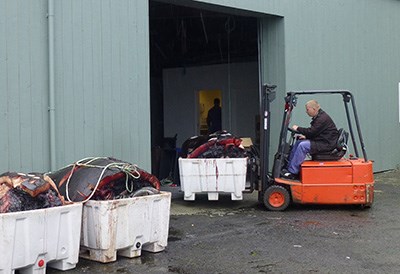Putting scientists’ boundary work in focus

How do scientists involved in discussions over the validity of particular research argue for their respective positions? This is the subject of a recent article in Environment and Planning E co-authored by CBM researcher Benedict Singleton, which utilises the case of scientific discussions over the use of lethal research methods on cetaceans (whales, dolphins and porpoises) to highlight the boundary work that is part of any scientific controversy.
Science is often called upon to adjudicate in a variety of conflicts, its practitioners granted considerable authority in many societies and situations. As such, in many settings, those on both sides will seek to employ the language of science and scientists in asserting their position. However, many disagreements relate less to science and to conflicting moral perspectives. Indeed, the morality of particular scientific practices may themselves become the focus for particular societal conflicts. In such circumstances scientists themselves become involved in contests to assert particular moral worldviews. How do scientists involved in discussions over the validity of particular research argue for their respective positions? This is the subject of a recent article in Environment and Planning E, co-authored by CBM researcher Benedict Singleton, which utilises the case of scientific discussions over the use of lethal research methods on cetaceans (whales, dolphins and porpoises) to highlight the boundary work that is part of any scientific controversy.
Whales and whaling retain symbolic salience in many parts of the world, even as it has become a marginal practice where it still occurs. The International Whaling Commission (IWC) remains divided between whaling and anti-whaling nations. One of the recurring flashpoint issues is over so-called scientific whaling: member states retain the right to set themselves whaling quotas for scientific research. To many anti-whaling nations such practices simply represent science being used as a fig-leaf for commercial whaling, thus circumventing the 1982 whaling moratorium. As such, historic and contemporary scientific whaling (at present only practiced by Japan) remain subjects of great controversy, with scientists on both sides being employed to argue for against the validity of such practices.
Based on interviews and observations the article documents a range of different boundary-marking strategies employed within the discussion, notably within two contexts, the IWC and conferences of the European Cetacean Society (ECS). These often take the form of purity and pollution claims based on an idealised vision of a disinterested, pure and objective science. In doing so respondents describing conflict at the IWC would rhetorically situate certain forms of research within and without science as well as ranking practices within science itself. However, at other times at the ECS, respondents utilised purity and pollution claims differently: with assertions that scientists could be 'too pure' and divorced from real world concerns. In these responses, science was acknowledged to be dependent on wider society as the source of problems that science is tasked with solving. Cutting oneself off from worldly concerns was criticised as making oneself irrelevant.
The article then relates these different rhetorical strategies to the institutional contexts within which they take place, employing the Mary Douglas-inspired theory of socio-cultural viability (cultural theory, for short). This highlights how boundary work is both reflective and performative of the worldviews integral to the different institutions within which they take place, the IWC and ECS. It thus highlights how cultural theory may be employed as tool for analysing and understanding the nature of various scientific and environmental conflicts.
Read the article: "Science, red in tooth and claw: Whaling, purity, pollution and institutions in marine mammal scientists’ boundary work" in Environment and Planning E: Nature and Space By Benedict E Singleton, Rolf Lidskog.